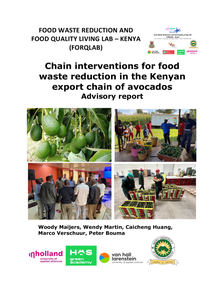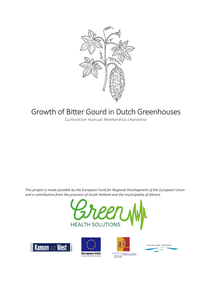Acne vulgaris is considered one of the most common medical skin conditions globally, affecting approximately 85% of individuals worldwide. While acne is most prevalent among adolescents between 15 to 24 years old, it is not uncommon in adults either. Acne addresses a number of different challenges, causing a multidimensional disease burden. These challenges include clinical sequelae, such as post inflammatory hyperpigmentation (PIH) and the chance of developing lifelong disfiguring scars, psychological aspects such as deficits in health related quality of life, chronicity of acne, economic factors, and treatment-related issues, such as antimicrobial resistance. The multidimensionality of the disease burden stipulates the importance of an effective and timely treatment in a well organised care system. Within the Netherlands, acne care provision is managed by several types of professional care givers, each approaching acne care from different angles: (I) general practitioners (GPs) who serve as ‘gatekeepers’ of healthcare within primary care; (II) dermatologists providing specialist medical care within secondary care; (III) dermal therapists, a non-physician medical professional with a bachelor’s degree, exclusively operating within the Australian and Dutch primary and secondary health care; and (IV) beauticians, mainly working within the cosmetology or wellness domain. However, despite the large variety in acne care services, many patients experience a delay between the onset of acne and receiving an effective treatment, or a prolonged use of care, which raises the question whether acne related care resources are being used in the most effective and (cost)efficient way. It is therefore necessary to gain insights into the organization and quality of Dutch acne health care beyond conventional guidelines and protocols. Exploring areas of care that may need improvement allow Dutch acne healthcare services to develop and improve the quality of acne care services in harmony with patient needs.
DOCUMENT

This report presents the highlights of the 7th European Meeting on Molecular Diagnostics held in Scheveningen, The Hague, The Netherlands, 12-14 October 2011. The areas covered included molecular diagnostics applications in medical microbiology, virology, pathology, hemato-oncology,clinical genetics and forensics. Novel real-time amplification approaches, novel diagnostic applications and new technologies, such as next-generation sequencing, PCR lectrospray-ionization TOF mass spectrometry and techniques based on the detection of proteins or other molecules, were discussed. Furthermore, diagnostic companies presented their future visions for molecular diagnostics in human healthcare.
DOCUMENT

Background: Previous studies found that 40-60% of the sarcoidosis patients suffer from small fiber neuropathy (SFN), substantially affecting quality of life. SFN is difficult to diagnose, as a gold standard is still lacking. The need for an easily administered screening instrument to identify sarcoidosis-associated SFN symptoms led to the development of the SFN Screening List (SFNSL). The usefulness of any questionnaire in clinical management and research trials depends on its interpretability. Obtaining a clinically relevant change score on a questionnaire requires that the smallest detectable change (SDC) and minimal important difference (MID) are known. Objectives: The aim of this study was to determine the SDC and MID for the SFNSL in patients with sarcoidosis. Methods: Patients with neurosarcoidosis and/or sarcoidosis-associated SFN symptoms (N=138) included in the online Dutch Neurosarcoidosis Registry participated in a prospective, longitudinal study. Anchor-based and distribution-based methods were used to estimate the MID and SDC, respectively. Results: The SFNSL was completed both at baseline and at 6-months’ follow-up by 89/138 patients. A marginal ROC curve (0.6) indicated cut-off values of 3.5 points, with 73% sensitivity and 49% specificity for change. The SDC was 11.8 points. Conclusions: The MID on the SFNSL is 3.5 points for a clinically relevant change over a 6-month period. The MID can be used in the follow-up and management of SFN-associated symptoms in patients with sarcoidosis, though with some caution as the SDC was found to be higher.
DOCUMENT

Background: Acne vulgaris is a multifaceted skin disorder, affecting more than 85% of young individuals worldwide. Pharmacological therapy is not always desirable because of the development of antibiotic resistance or the potential risk of adverse effects. Non‐pharmacological therapies can be viable alternatives for conventional therapies. However, sufficient evidence‐based support in the efficacy and safety of non‐pharmacological therapies is lacking. Objective: To assess the efficacy and safety of several non‐pharmacological therapies in the treatment of acne vulgaris. Methods: A systematic literature review, including a best‐evidence synthesis, was performed to identify literature. Three electronic databases were accessed and searched for studies published between January 2000 and May 2017. Results: Thirty‐three eligible studies were included in our systematic review. Three main types of non‐pharmacological therapies were identified laser‐ and light‐based therapies, chemical peels and fractional microneedling radiofrequency. The majority of the included studies demonstrated a significant reduction in acne lesions. However, only seven studies had a high methodologic quality. Based on these seven trials, a best‐evidence synthesis was conducted. Strong evidence was found for glycolic acid (10–40%). Moderate evidence was found for amino fruit acid (20–60%), intense pulsed light (400–700 and 870–1200 nm) and the diode laser (1450 nm). Initially, conflicting evidence was found for pulsed dye laser (585–595 nm). The most frequently reported side‐effects for non‐pharmacological therapies included erythema, tolerable pain, purpura, oedema and a few cases of hyperpigmentation, which were in most cases mild and transient. Conclusion: Circumstantial evidence was found for non‐pharmacological therapies in the treatment of acne vulgaris. However, the lack of high methodological quality among included studies prevented us to draw clear conclusions, regarding a stepwise approach. Nevertheless, our systematic review including a best‐evidence synthesis did create order and structure in resulting outcomes in which a first step towards future research is generated.
DOCUMENT

This publication the avocado advisory report which is based on popular papers (practice briefs) of master and bachelor theses and business assignments of students at three Dutch Universities of Applied Sciences: Van Hall Larenstein (VHL), InHolland and HAS Green Academy, and Meru University of Science and Technology in Kenya. All 23 theses and business assignments were commissioned through the research project entitled “Food Waste Reduction and Food Quality LivingLab (FORQLAB)” in Kenya.
DOCUMENT

The psychosocial consequences of growing up with Heritable Connective Tissue Disorders (HCTD) are largely unknown. We aimed to assess Health-Related Quality of Life (HRQoL) and mental health of children and adolescents with HCTD. This observational multicenter study included 126 children, aged 4–18 years, with Marfan syndrome (MFS, n = 74), Loeys–Dietz syndrome (n = 8), molecular confirmed Ehlers–Danlos syndromes (n = 15), and hypermobile Ehlers–Danlos syndrome (hEDS, n = 29). HRQoL and mental health were assessed through the parent and child-reported Child Health Questionnaires (CHQ-PF50 and CHQ-CF45, respectively) and the parent-reported Strengths and Difficulties Questionnaire. Compared with a representative general population sample, parent-reported HRQoL of the HCTD-group showed significantly decreased Physical sum scores (p < 0.001, d = 0.9) and Psychosocial sum scores (p = 0.024, d = 0.2), indicating decreased HRQoL. Similar findings were obtained for child-reported HRQoL. The parent-reported mental health of the HCTD-group showed significantly increased Total difficulties sum scores (p = 0.01, d = 0.3), indicating decreased mental health. While the male and female MFS- and hEDS-subgroups both reported decreased HRQoL, only the hEDS-subgroup reported decreased mental health. In conclusion, children and adolescents with HCTD report decreased HRQoL and mental health, with most adverse outcomes reported in children with hEDS and least in those with MFS. These findings call for systematic monitoring and tailored interventions.
DOCUMENT

At the department of electrical and electronic engineering of Fontys University of Applied Sciences we are defining a real-life learning context for our students, where the crossover with regional healthcare companies and institutes is maximized. Our innovative educational step is based on openly sharing electronic designs for health related measurement modalities as developed by our students. Because we develop relevant reference designs, the cross fertilization with society is large and so the learning cycle is short.
DOCUMENT

Implementation of reliable methodologies allowing Reduction, Refinement, and Replacement (3Rs) of animal testing is a process that takes several decades and is still not complete. Reliable methods are essential for regulatory hazard assessment of chemicals where differences in test protocol can influence the test outcomes and thus affect the confidence in the predictive value of the organisms used as an alternative for mammals. Although test guidelines are common for mammalian studies, they are scarce for non-vertebrate organisms that would allow for the 3Rs of animal testing. Here, we present a set of 30 reporting criteria as the basis for such a guideline for Developmental and Reproductive Toxicology (DART) testing in the nematode Caenorhabditis elegans. Small organisms like C. elegans are upcoming in new approach methodologies for hazard assessment; thus, reliable and robust test protocols are urgently needed. A literature assessment of the fulfilment of the reporting criteria demonstrates that although studies describe methodological details, essential information such as compound purity and lot/batch number or type of container is often not reported. The formulated set of reporting criteria for C. elegans testing can be used by (i) researchers to describe essential experimental details (ii) data scientists that aggregate information to assess data quality and include data in aggregated databases (iii) regulators to assess study data for inclusion in regulatory hazard assessment of chemicals.
DOCUMENT

The objective of this study is to investigate the heart rate (HR) accuracy measured at the wrist with the photoplethysmography (PPG) technique with a Fitbit Charge 2 (Fitbit Inc) in wheelchair users with spinal cord injury, how the activity intensity affects the HR accuracy, and whether this HR accuracy is affected by lesion level.
MULTIFILE

Bitter gourd is also called sopropo, balsam-pear, karela or bitter melon and is a member of the cucumber family (Cucurbitaceae). It is a monoecious, annual, fast-growing and herbaceous creeping plant. The wrinkled fruit of the bitter gourd is consumed as a vegetable and medicine in Asia, East Africa, South America and India. The aim of this bitter gourd cultivation manual is to make this cultivation accessible to Dutch growers and in this way be able to meet market demand. In addition, this cultivation manual aims to provide insight into the standardized production of the medicinal ingredients in the fruit.
DOCUMENT
